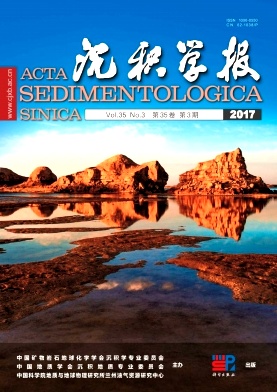Discovery of the Upper Triassic Karst in Northwest Sichuan Basin, China: Implications for Carnian Tectonic and Paleoclimatic Evolution
doi: 10.14027/j.cnki.cjxb.2017.03.004
- Received Date: 2016-08-10
- Rev Recd Date: 2016-09-08
- Publish Date: 2017-06-10
-
Key words:
- Karst /
- Carnian Pluvial Event /
- Longmen Mountain /
- Upper Triassic
Abstract: A karst surface is first found at the top of the Upper Triassic Carnian sponge limestone at Hanwang sections in Mianzhu and Jushui section in Anxian, northwestern Sichuan Province, China. Piebald structures and honeycomb dissolved pores are obvious in the karst outcrops, and karst breccia, filling material (e.g., micritic-sparry calcite and terrigenous quartz grains) in the dissolved pores and micritization granules are discovered with microscope. According to the microscopic characteristics and the lithology, the eogenetic karst is determined to be a single layer, overlied yellow and black shale containing abundant marine fossils. The identification of ammonoids in the shales shows that the karst is an important isochronous surface regarded as the boundary of the upper and lower Carnian. The strata above the karst are different between the Hanwang sections and Jushui section, i.e., the overlying rocks above the karst in the Qingyangou section, Hanwang are black silty shale and bioclastic limestone (e.g. lamellated sponge limestone and crinoidal limestone) while in Guanyinya section, Hanwang, the overlying rocks above the karst are shale and moundy sponge limestone. However, karst caves are developed at the top of sponge boulders in the Jushui section. Comprehensive research implies that the formation time of this karst is close to the occurrence of the Longmen Mountain uplift and the Carnian Pluvial Event, it is thus inferred that the karst was caused by the joint effect of uplift of Longmen Mountain and Carnian paleoclimatic event.
| Citation: | DU YiXing, SHI ZhiQiang. Discovery of the Upper Triassic Karst in Northwest Sichuan Basin, China: Implications for Carnian Tectonic and Paleoclimatic Evolution[J]. Acta Sedimentologica Sinica, 2017, 35(3): 460-469. doi: 10.14027/j.cnki.cjxb.2017.03.004 |






 DownLoad:
DownLoad: